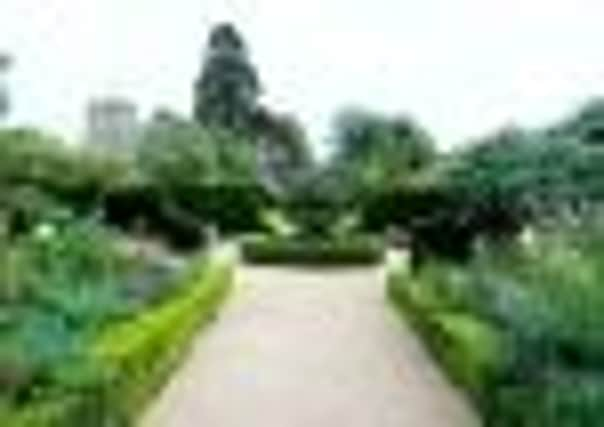November provides amild start to winter


Last year we had already fleeced all of the less hardy plants and palms ready for the cold winter, admittedly this year we are only just beginning to do this as it has been a delight to be able to still enjoy the gardens before they are put to bed for the winter.
Our nursery is filling up with plant divisions from our English herbaceous border, all queuing up ready to be reused elsewhere in the gardens.
Advertisement
Hide AdAdvertisement
Hide AdWe have a variety of different types of borders throughout the gardens and when creating more it’s always good to look back in history at the masters, such as Gertrude Jekyll.
Gertrude Jekyll (1843-1932), was probably the most respected gardener of her time and her influence on the art of gardening is evident throughout the world today.
She designed about 400 gardens (three of which were for clients in the United States) but, because so few survive and only a handful are accurately restored, it is by her books and articles that she is best remembered.
She taught the world the full craft and art of gardening. She appreciated the beauty of both natural and formal styles and explained the importance of structure, proportion, colour, scent and texture in gardens of almost any scale. She was never afraid to experiment with her ideas.
Advertisement
Hide AdAdvertisement
Hide AdGertrude worked closely with several architects, notably Sir Edwin Lutyens whom she met in 1889 when she was 45 and he 26.
Their first project together was Gertrude’s own home, Munstead Wood; they went on to collaborate on over 100 gardens. Most of her 350 gardens have been lost, but a few, notably Upton Grey and Hestercombe, have been wholly or partly restored. By the 1920s Lutyens was at the height of his career; Gertrude remained active into her eighties, advising Lutyens on aspects of his greatest project, New Delhi.
We are often asked what is considered an herbaceous border?
They are principally a collection of herbaceous perennial plants, plants that have an indefinite life span of more than three years.
Advertisement
Hide AdAdvertisement
Hide AdAnnuals and biennials are the names given to herbaceous plants which generally live less than three years.
After flowering and setting seed herbaceous plants will die back before they reappear during the following spring.
They require a huge amount of work throughout the seasons, but are magnificent during the summer months when in full colour, and with careful planning, constant attention, they can change and evolve throughout the flowering season.
You can choose bold colours such as our hot borders, or a more subtle colour scheme such as our paler tones in the English Borders, whatever colours and textures you choose they will be enjoyed by not only you, but with the right plants, they attract beneficial insects such as bees which in turn produce their wonderful honey.
Advertisement
Hide AdAdvertisement
Hide AdIn our hot borders we are planting vibrant Olympic flame tulips to celebrate the 2012 London Olympics and in the English borders we are planting the paler Angelique tulips with Dutch iris - oriental beauty and Camassia cusickii, which have pale blue tall flowering spikes.
In the organic vegetable garden Izzy’s clearing and preparing for the next crop rotation, the bean bed is also getting her attention this week.
Seed has been collected from the runner beans, whilst their nitrogen rich root systems have been dug back into the soil.
This bed will contain next year’s carrots, parsnips and onions, so heavy mulching will not be necessary, as it can distort the roots of carrots, causing them to fork.
Advertisement
Hide AdAdvertisement
Hide AdThe unusually mild weather may have confused many of the plants; we still have ripe strawberries alongside primroses in bloom!
It does make pruning and tying in of the summer raspberries an altogether more comfortable experience!
The dead canes from last year’s stock are cut back to ground level and the new growth tied in to a wire frame.
We welcome a new horticulturalist gardener, Kate Pheasant, who has just joined the castle garden team.
Here are a few tips from the castle garden team:
Advertisement
Hide AdAdvertisement
Hide AdGrow your garlic over winter the garlic will take root and grow gently through winter giving you bigger, better and earlier garlic harvest.
Choose and plant your fruit trees.
Plant your summer fruiting raspberries, sold as bare canes in bundles and should be planted straight away so they don’t dry out.
The castle and grounds are closed for the winter, but we look forward to seeing you next spring.
Happy Gardening!